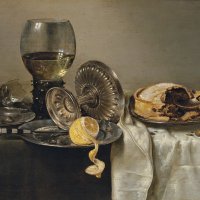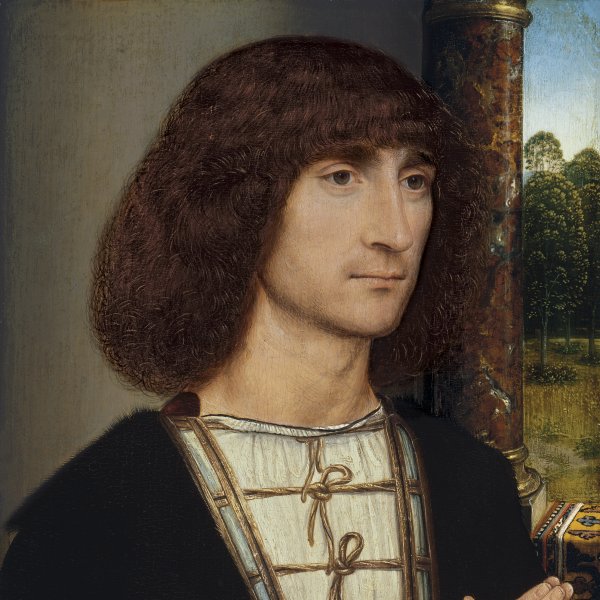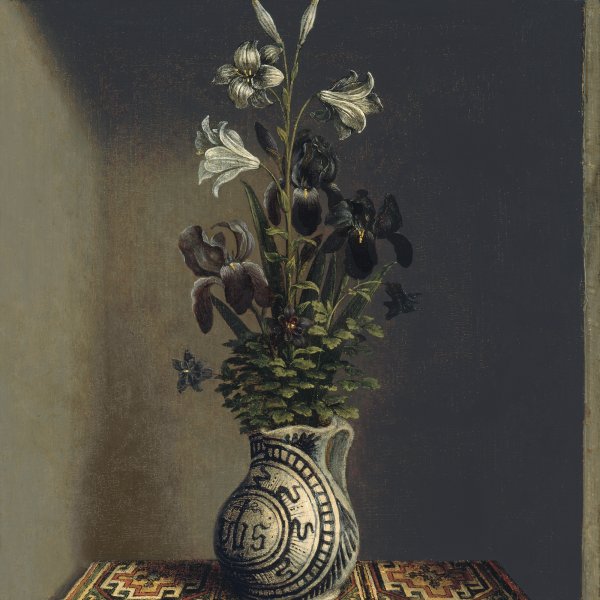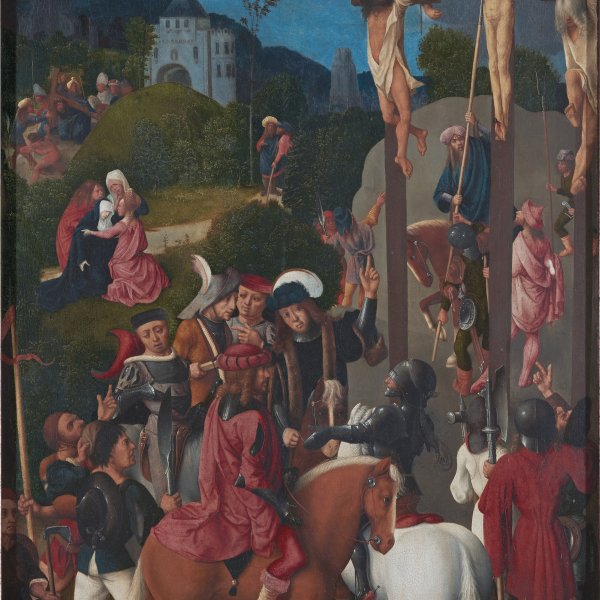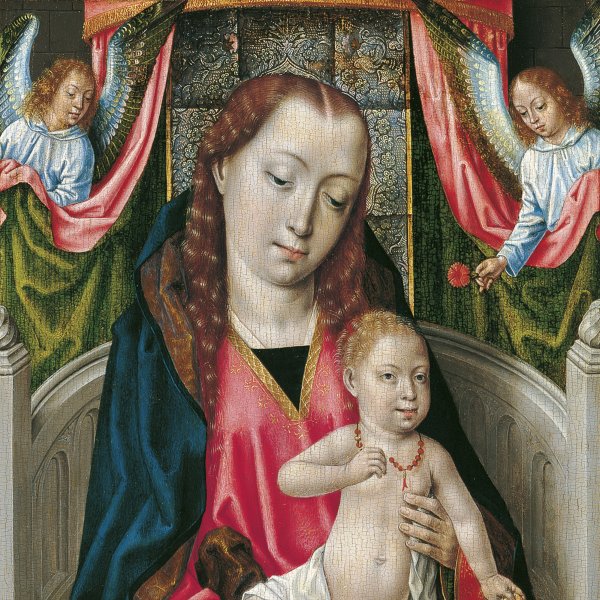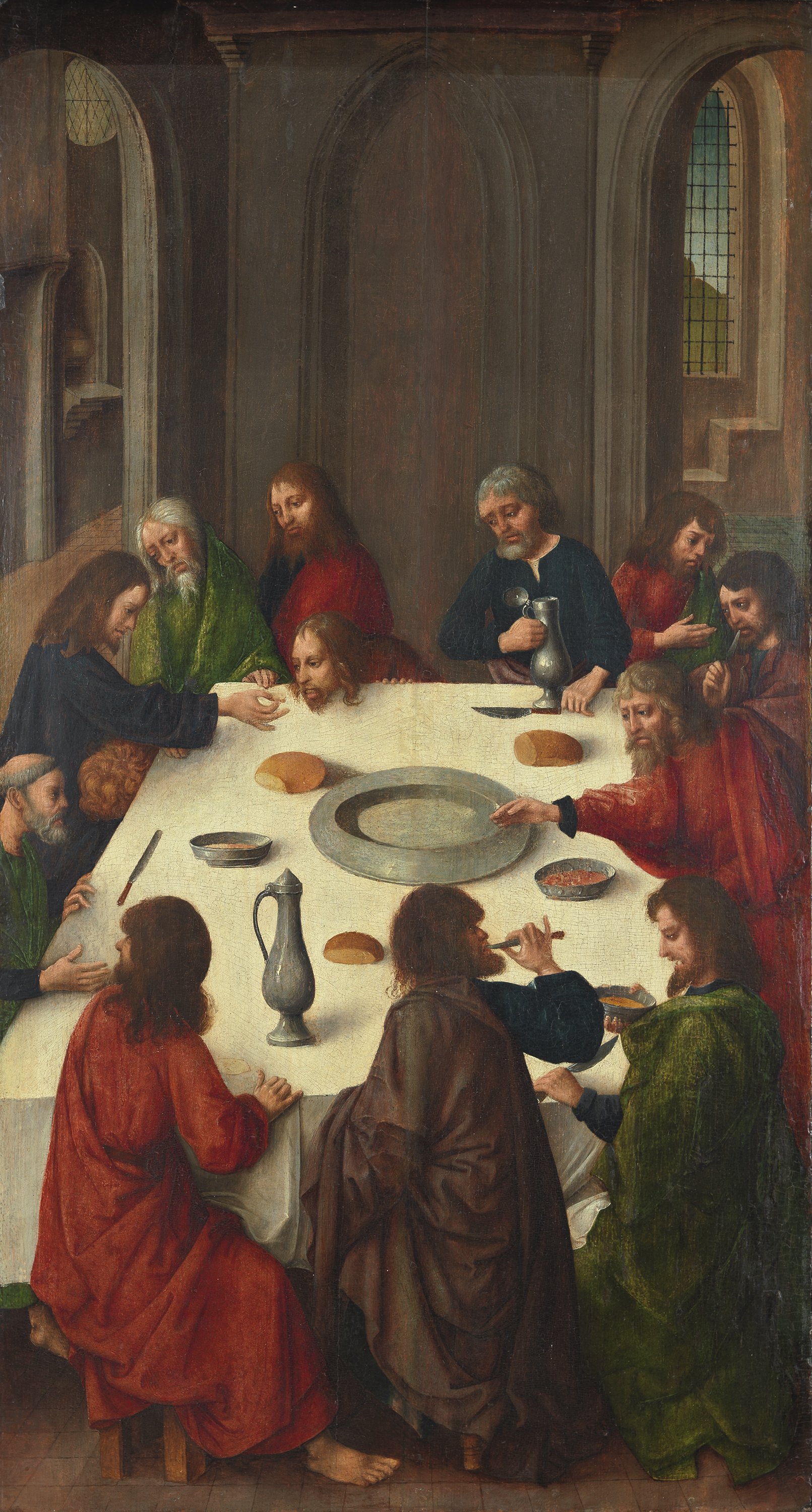The Last Supper
This painting was attributed to various anonymous masters stylistically associated with the northern Netherlandish school until the art historians Boon and Eisler gave it to a follower of the Master of the Virgo inter Virgines. Eisler also attributed a panel of The Marriage of the Virgin (Philadelphia Museum of Art) to this painter. Together with the present panel, they may have formed part of a triptych whose central panel has not been identified. In the present work the artist located the twelve Apostles around a table. Christ, seated on the left, is recognisable through the figure of Saint John reclining on his lap and from his gesture of offering bread to Judas. The artist places considerable emphasis on the simple still life on the table, in which striking elements include the large empty dish in the centre and the objects such as a pitcher and knives arranged in a circle around it.
This panel, which entered the Thyssen-Bornemisza collection in 1956, was the subject of various suggestions regarding its attribution on the part of art historians in the 1950s. Among them, it was Karel G. Boon who studied the painting in most depth in order to establish possible connections with other works that might suggest a name for this anonymous creator. Both Valentiner and Friedländer attributed this Last Supper to the Master of the Virgo inter Virgines while Boon noted its particularly Dutch characteristics and attributed it to the Master of the Amsterdam Death of the Virgin. In 1963 Boon revised his opinion and attributed the painting to a follower of the Master of the Virgo inter Virgines, a suggestion followed by Colin Eisler in his study of the Early Flemish paintings in the Thyssen-Bornemisza collection. The attribution has been retained for this panel. Eisler also attributed to this artist a painting in the Johnson Collection (Philadelphia Museum of Art) depicting The Marriage of the Virgin and which might have belonged, together with the present work, to one of the lateral wings of a triptych whose central image remains unidentified. Boon also emphasised the similarities between the present compositions and The Marriage of the Virgin and a series of prints published in the Boeck van den Leven ons heeren published in Antwerp by Gheraert Leeu in 1487.
The present artist, whose figures convey something of the expressivity found in works by the Master of the Virgo inter Virgines, depicts the twelve Apostles in a plain interior. The saints are arranged around a wide table, which the artist has failed to fit into the pictorial space with absolute perspectival correctness. On the left we see Christ in profile, who can be identified by the presence of Saint John resting his head in his lap and the bread that Christ offers Judas, who leans his head on the table in order to take the communion. The artist depicts the moment recounted in the Gospel of Saint John just after Christ has said “one of you shall betray me”, when Saint John, leaning against Christ, asks him who it will be and Christ replies: “‘He it is, to whom I shall give a sop, when I have dipped it’. And when he had dipped the sop, he gave it to Judas Iscariot, the son of Simon”. Rather than analyzing the reactions of the Apostles to Christ’s pronouncement, the artist focuses on Judas’ act of betrayal as he takes the sop.
This anonymous painter placed considerable emphasis on the simple still life on the table. The dazzling white cloth functions to highlight the large, round, empty platter in the centre, surrounded almost in the form of a circle by three small loaves and two metallic dishes. The knives and jugs of wine serve to accentuate this arrangement.
A Pietà in a private collection is also attributed to this painter.
Mar Borobia

